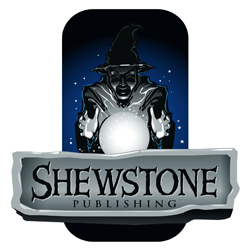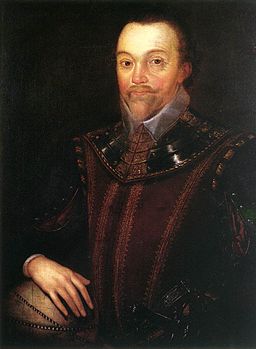Layout for Magonomia Core Rules started a couple of weeks ago. We have a lot of words to fit into the book so we’re going with a simple layout. I think it looks great and it’s easy to read and navigate. Check out the layout samples of chapters 4 through 6!
Magonomia® preview - the glossary!
Once again, I was working hard on final edits to Magonomia Core Rules over the weekend so I forgot the promised preview. I’ll take this opportunity to share the Glossary.
Why the glossary?
It’s not as much fun as spells or monsters, but it’s super useful, especially when you are learning the game. Making Magonomia easy to learn is a huge priority for us. We realize the GM has to ask players to learn a new game system, so we’ve applied our design team’s extensive experience (mostly from our day jobs) to making it as easy as possible.
The Magonomia glossary: because this game is designed for players.
Magonomia® Preview: Strongest and Weakest Spells
Magonomia®, the tabletop RPG of Renaissance wizardry, is coming soon! We’re on track for a July 2021 general release. While you’re waiting, let’s continue to look at the magic system and the spells. The spells are inspired by folklore and real-world books of magic; they’re the centerpiece of the game.
Spells of High and Low Degree
The power of a spell in Magonomia is rated by degree, from first to sixth. Degree is simply a more atmospheric term than “level.” First-degree spells are the weakest that are useful in adventures. Sixth-degree spells are the most powerful spells PC wizards can attain. Seventh-degree spells are thought to be possible but they’re legendary, out of reach for player characters: the elixir of eternal life, for example.
Magic in Magonomia is based on literary or historical sources so it is different from conventional fantasy. There are no fireballs, no interdimensional travel, and no mind control. Historically-themed magic doesn’t mean low magic or weak magic, though! Check out one of our sixth-degree spells, which PC wizards can attain after completing many adventures.
Chariot of the Winds
Degree 6 Sorcery; governed by Mercury
Invisibly transport a group of people through the air. Conjuration.
Onstage Preparation: 1 minute
Augmentation: None
Components: Sigils, implement, incantations
Activation: Spend a Fate Point; Overcome vs. 6
Duration: Until the end of the journey
The wizard conjures spirits who can carry them and up to ten other people through the air over long distances. When your character learns this spell, they form a pact with whatever type of spirits fit the theme of their magic, be they sprites or daemones of the upper air or the King of the Eagles. The spirits transport the caster and their companions by some magical conveyance, which could be a chariot made of rainbows and drawn by cloud horses, a flock of bat-winged imps who carry people by their clothes, or a whirlwind.
While traveling, the characters are invisible to normal sight but they can see the landscape from their altitude of about a thousand feet. The speed of travel is about 200 miles an hour—as fast as an arrow. The travelers are magically shielded from the full force of the wind.
At the other end of the spectrum, we have the simple but often versatile first-degree spells. Every wizard begins with four first-degree spells in their repertoire.
Chill of the Sudden Draught
Degree 1 Sorcery, Witchcraft; governed by Saturn
A cold breeze blows out light sources or blows things around. Conjuration.
Onstage Preparation: Fast
Augmentation: None
Components: Spirit container, implement, incantations
Activation: Overcome vs. 1
Duration: Instantaneous
An airy spirit moves as a cold draught into a zone the caster can see. It can blow out a handful of typical light sources—candles, lamps, even covered lanterns. It can also do anything a natural breeze could do: scatter papers off a desk, sweep a path across a dusty floor, or slam a door. If you succeed with style, you can control the draught well enough to waft a piece of paper into your hand from across the room.
Magonomia® preview: two spooky spells!
Editing on Magonomia® Core Rules is humming along. We missed posting the promised weekly preview last week because I was heads down on editing tasks. To partly make up for that, I’ll give you not one, but two spells that aren’t present in the Starter Rules!
It’s a bright, sunny spring day outside, but I’m currently checking the final edits on Sorcery spells, so let me give you two spells that are spooky as all get-out. That’s Sorcery for ya!
Will-o’-the-Wisp
Degree 1 Sorcery, Witchcraft; governed by the Moon
Conjure an Eerie Green Light up to two zones away. Conjuration.
Onstage Preparation: Fast
Augmentation: Activate concurrently
Components: Spirit container, implement
Activation: Overcome vs. 1
Duration: One scene
A will-o’-the-wisp is a spirit that dwells in bogs and has a body made of cold, flickering green flame. You have a pact with such a spirit and can command it to float in the air where you direct it. It burns as bright as a single candle, so you can use it as a light source or as a signal. In darkness, the Eerie Green Light Aspect can be Invoked to aid Actions that unnerve or frighten people.
Whispers of the Bones and Ashes
Degree 1 Sorcery, governed by Saturn
Find human remains and possibly learn a useful fact about them. Conjuration, Necromancy.
Onstage Preparation: 1 minute
Augmentation: None
Components: Incantations, a small item from a ghost’s previous life
Activation: Overcome vs. 1
Duration: One scene
You conjure a ghost into yourself and thereby gain the ability to hear a faint, constantly muttering whisper coming from any corpse. You can hear the whispers through several feet of earth if you pass nearby. Any piece of a corpse larger than a hand emits such whispers, as long as the person died before the piece was removed (an amputated limb is not detectable by this spell). It even works if the remains have been cremated.
Usually, the whisper is just unnerving nonsense, but if you succeed with style, you learn something potentially useful about the corpse, such as how long it has been dead or perhaps even the name it had in life.
These spells are Open Game Content, licensed to the public to use, modify, and republish under the terms of the Open Game License, version 1.0a
Historical Characters in RPGs
One of the challenges in designing a historically themed RPG is that history is full of controversial figures. This doesn’t have to put you off playing in a historical setting or even weaving those figures into your stories. After considerable thought and study, we at Shewstone Publishing have come up our preferred approach.
The following short article is an except from the Magonomia® Core Rules.
Real-world people are complicated. One could read several entire books about Queen Elizabeth and not come away with a clear opinion whether she was a good ruler or a bad one. In fiction, especially in collaborative fiction like an RPG, nuance and moral ambiguity don’t always improve the narrative. When you want to use historical characters in your game, we recommend you decide first what role you want that character to fill in your campaign, then choose Aspects, skills, and stunts that suit that role.
For example, consider the famous buccaneer Francis Drake. You could portray him as the dashing, heroic figure he seemed to want to project. If you research his actions, some of the shine comes off his image. He led one slave trading voyage and some might say he recklessly provoked war with Spain. Thus, it’s possible to write two rather different characters based on Francis Drake: “Drake as a Patriotic Hero” or “Drake as a Manipulative Loose Cannon.” Either is perfectly usable, depending on the role you want Drake to have in your campaign.
When we present a historical character in Magonomia products, the character’s name will always be accompanied by an explicit “angle” we’re taking on the character. You may later see the same historical person presented from an entirely different angle, with different Aspects and a different role in mind for the character.
©2021 Shewstone Publishing LLC. All rights reserved.





